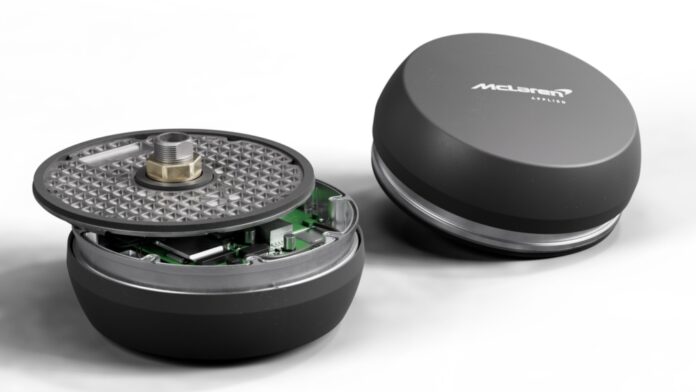After Formula 1 it can handle anything
Formula 1 racing’s technology spin off McLaren Applied (MA) has developed 5G intelligent edge antenna that can fit any moving vehicle applications. Once designed to be small, light and durable enough for Formula 1 cars, these connectors will make easy work of connecting any vehicles to any comms service in any industry, claimed MA, which is targeting transport, logistics and the connected car sectors.
The Halo 300 can replace the complex installation processes of bulky additional hardware and a provide a steady signal that performs better while consuming less time and money. Installation and maintenance chores are minimised with in-built dual modems, fewer cables and no need for a separate router or access point. High quality hardware, including Huber+Suhner antenna components and software tested in hundreds of races in the world’s most demanding circuits prepare the technology for anything the world can throw is, according to MA, which has challenged the telco industry to bring on its toughest tasks.
Halo 300 uses edge computing, integrated eSIMs, application support and a master serial bus standard CANBUS interface instantly inject data faster like a rolling pitstop, which a claims will create new use cases for 5G.
MA’s Fleet Connect software was built to give high-speed W-Fi connections by splitting data across networks in real time and reassembling it in the cloud en route to its destination. This obviated blackspots and has created a consistent connectivity stream. Now MA wants to apply these antenna everywhere from mass transit to mining, only in this case driver will be discouraged from making ‘pitstops’, while vehicle diagnostics might be used to stop leaden footed bus drivers from revving up and stamping on the brakes, a jerky driving style that creates many casualties on public transport. Bus, light rail, tram and boat passengers will enjoy more comfortable, productive journeys, according to Mark Halliday, Head of Product and Programmes at McLaren Applied.
“The Halo 300 in a compact convenient package is truly exciting,” said Halliday. Form a queue for energy efficiency, scheduling and maintenance for operators, better experiences for passengers and autonomy for the intelligent bus.



